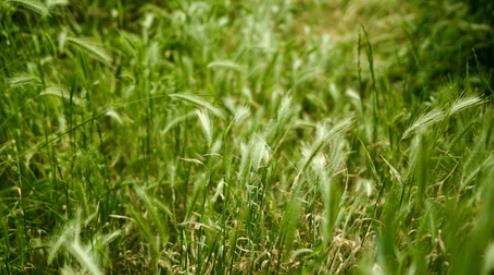On June 9, 2025, Tzion Fahima from the University of Haifa and Lin Huang from Sichuan Agricultural University published an important research result entitled "A head-to-head NLR gene pair from wild emmer confers stripe rust resistance in wheat" in Nature Genetics.
The study successfully cloned a pair of key disease resistance "gene partners" from the "wild ancestor" of wheat - wild emmer wheat: TdNLR1 and TdNLR2. This study found that NLR disease resistance genes in wheat work together as "partners" to fight stripe rust, expanding the scientific understanding of wheat NLR disease resistance proteins against pathogens.
Wheat stripe rust is a serious fungal disease that can cause a significant reduction in wheat production and threaten food security. The existing disease-resistant wheat varieties have relatively single gene sources, and pathogens can easily "evolve" to break through their defenses. Wild wheat has accumulated a rich "treasure" of disease-resistant genes in its long-term natural evolution.
From 2012 to 2016, while studying for a doctorate at the University of Haifa in Israel, Lin Huang discovered that a wild two-grain wheat numbered TD121 had extremely strong resistance to stripe rust. In 2017, after joining Professor Dengcai Liu's team, Lin Huang conducted an 8-year in-depth study of the introduced resource. The research team finally locked on the key disease resistance site YrTD12, and further successfully found the pair of core disease resistance genes - TdNLR1 and TdNLR2 - on the short arm of wheat chromosome 1B.
TdNLR1 encodes a structurally complete immune protein (CC-NB-LRR), which is like a fully equipped "main attacker" and is the core of the disease resistance function.
TdNLR2 encodes a protein that lacks a partial structure (CC domain), like a special "auxiliary soldier".
The research team has fully confirmed through various experimental methods such as gene silencing, gene editing, and transgenics that the disease resistance of TdNLR1 must rely on the assistance of TdNLR2 to be exerted. TdNLR2 is likely to play the role of an "assistant" to help transmit key immune signals.

This new "gene partner" naturally present in wild two-grain wheat has not yet been found in modern cultivated wheat. The research team has introduced this pair of genes into Sichuan wheat and cultivated a new strain with high resistance to stripe rust. The combination of TdNLR1/TdNLR2 has a novel structure and a unique mode of action. It provides valuable new gene resources and potential new disease resistance mechanisms for wheat disease resistance breeding, and is expected to help cultivate new wheat varieties with more durable and broader resistance, which is of great significance for ensuring stable and high yields of wheat.